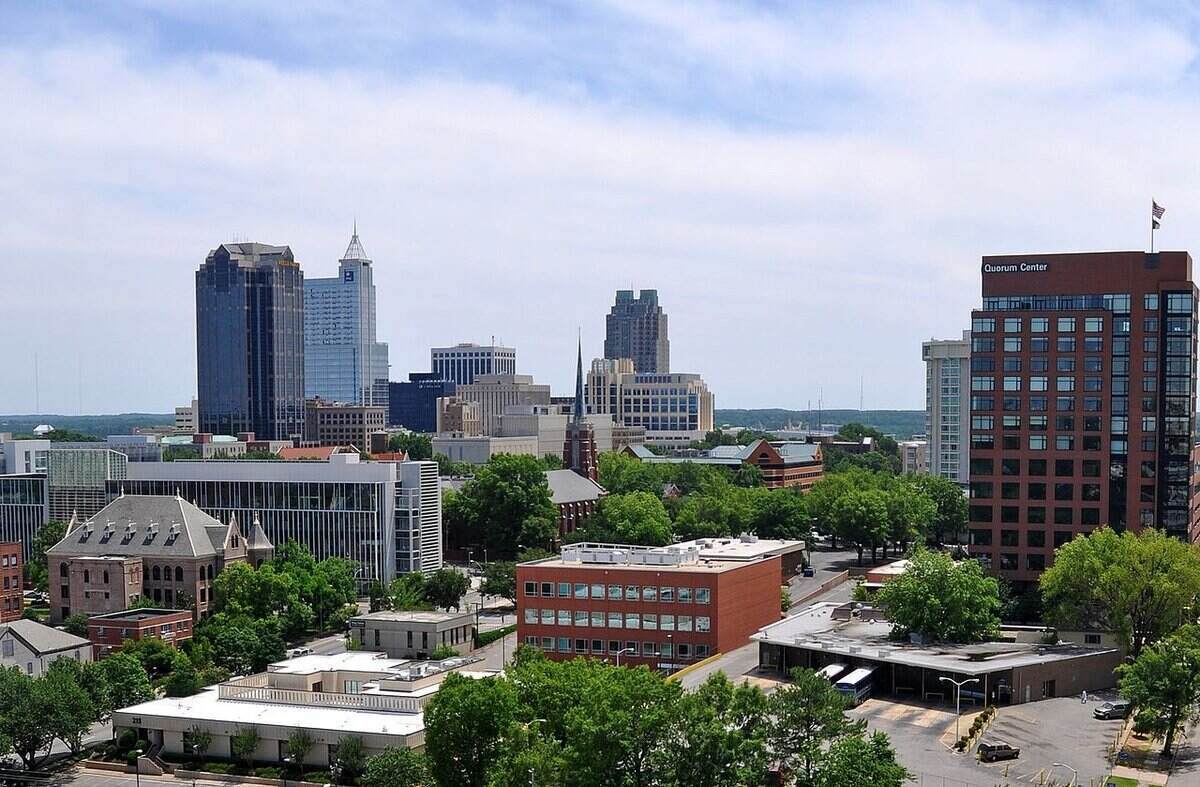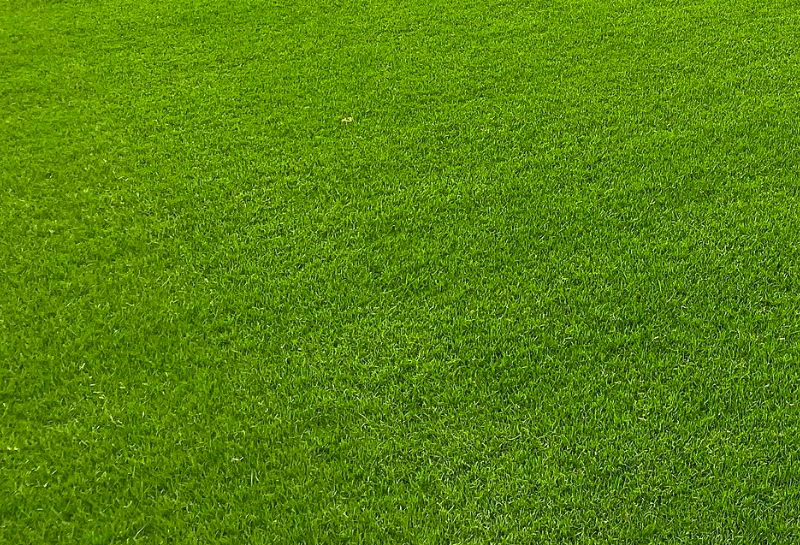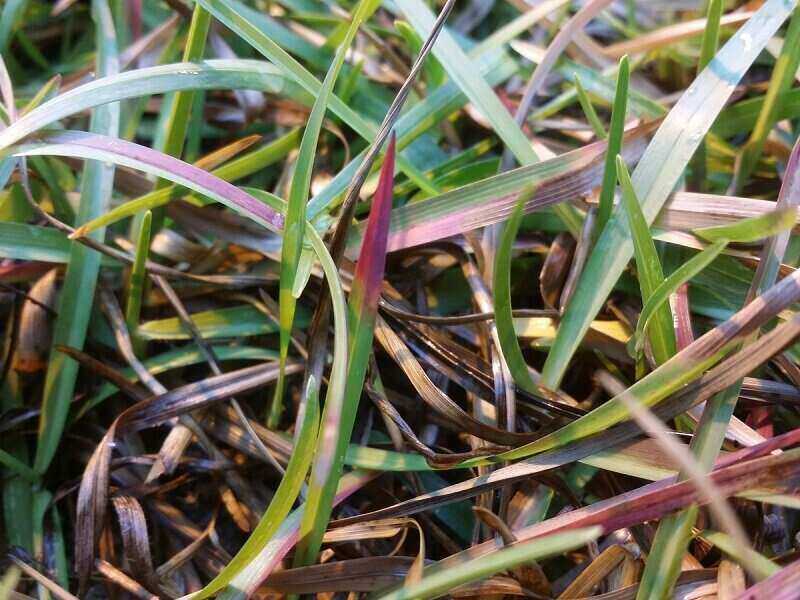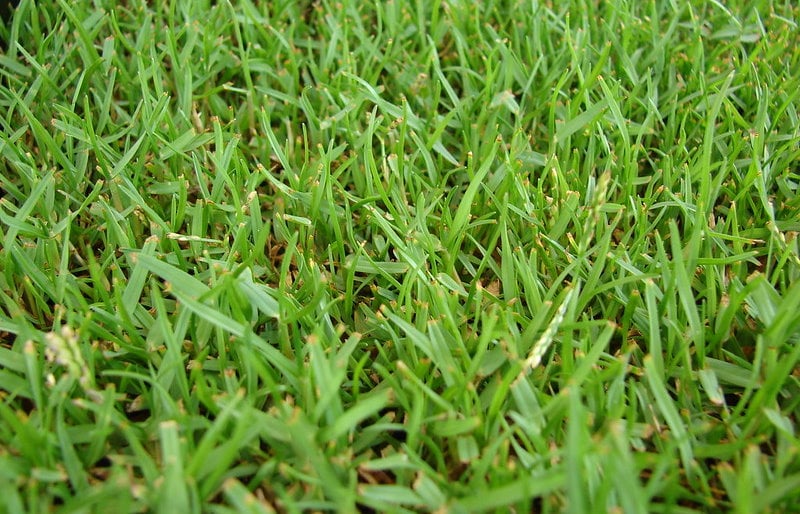
As the City of Oaks, Raleigh boasts a plethora of beautiful, stately oak trees. Don’t you wish your grass had the same majesty and vigor?
Here are five grass types that work well in this stately capital city:
- Kentucky bluegrass mix
- Tall fescue
- Bermudagrass
- Centipedegrass
- Zoysiarass
- Classification: Cool-season grass
- Spreads by: Kentucky bluegrass (rhizomes); fine fescues (creeping red fescues have short rhizomes, other species are bunch-type); tall fescues (bunch-type)
- Shade tolerance: Moderate. KBG needs full sun, but fine fescues and tall fescues can tolerate partial shade.
- Drought tolerance: Very good; KBG may go dormant in the summer months but will recover quickly once fall’s cooler temperatures arrive
- Foot traffic tolerance: Very good overall; tall fescue and KBG resist wear in higher-traffic lawns, but fine fescues thrive in low-traffic areas
- Maintenance needs: Moderate to high
- Mowing height: 1.5-3.5 inches
- Potential for disease: Tall fescue and fine fescues have good disease resistance, but KBG has a moderate to high disease risk. Proper management and care reduces disease pressure in all grass types.
- Classification: Cool-season grass
- Spreads by: Bunch-type
- Shade tolerance: Moderate
- Drought tolerance: Moderate to high, but plan to irrigate during extended drought
- Foot traffic tolerance: High
- Maintenance needs: Moderate
- Mowing height: 2 ½-3 ½ inches
- Potential for disease: Low
- Classification: Warm-season grass
- Spreads by: Stolons and rhizomes
- Shade tolerance: Low
- Drought tolerance: High
- Foot traffic tolerance: High
- Maintenance needs: High; needs regular dethatching
- Mowing height: ¾-2 inches
- Potential for disease: Low
- Classification: Warm-season grass
- Spreads by: Stolons
- Shade tolerance: Moderate
- Drought tolerance: Low to moderate
- Foot traffic tolerance: Low
- Maintenance needs: Low
- Mowing height: 1-2 inches
- Potential for disease: Moderate. Centipedegrass is susceptible to developing thatch, especially with excessive fertilization and limited mowing. Thatch blocks water from reaching the soil, which can allow pests and diseases to proliferate.
- Classification: Warm-season grass
- Spreads by: Stolons and rhizomes
- Shade tolerance: Moderate
- Drought tolerance: High
- Foot traffic tolerance: High, but slow to recover from wear
- Maintenance needs: Low, but you’ll need to dethatch every two-three years
- Mowing height: ¾ -2 inches
- Potential for disease: Moderate; large patch, rust, and dollar spot may affect this grass
- What is your intention with your outdoor space?
- Kentucky bluegrass mixes, tall fescue, bermudagrass, and zoysiagrass are great choices for multi-purpose lawns with active families.
- What amount of shade does your lawn get? And for how long?
- Bermudagrass thrives in a full-sun lawn. The other species can handle areas with partial shade.
- Which maintenance level best fits you and your lawn’s needs?
- Those looking for an affordable and less labor-intensive lawn should aim for Zoysiagrass or centipedegrass. KBG mixes, tall fescue, and bermudagrass require more care and attention.
- What type of mower do I need for my lawn?
- Reel mowers are ideal for grasses that need to be cut short (less than one inch), such as Zoysiagrass and bermudagrass. Some people think the reel mower gives a cleaner, more beautiful cut as well. However, reel mowers are best used on smaller, flat lawns. Large, uneven lawns usually require a rotary mower.
1. Kentucky bluegrass mix

Brenda Ryan | Lawn Love
The cool-season grasses that work well in Raleigh include Kentucky bluegrass mixes and tall fescue. Cool-season grasses thrive in the spring and fall but may wilt or go dormant during the hot summer months.
Kentucky bluegrass (KBG) mixes consist of KBG, tall fescue, and fine fescues (usually added for partially shaded lawns). These grasses produce beautiful, high-quality lawns as long as you put in the work to maintain them. These lawns will survive droughts, handle moderate to high levels of foot traffic, and tolerate partial shade.
Other notes: Cool-season grasses usually need overseeding in the fall to repair summer damage. Remove thatch periodically or when it reaches ¾ inch. Fertilize with 2-3.5 pounds of nitrogen per 1,000 square feet per year.
Grass Seed Options:
– Jonathan Green (11970) Blue Panther Kentucky Bluegrass Grass Seed (3 lbs.)
– SeedRanch Midnight Kentucky Bluegrass Seed (5 lbs.)
– Jacklin Seed – Biltmore Blue Blend – 100% Kentucky Bluegrass (5 lbs.)
2. Tall fescue

Ty Haller | Flickr | CC BY-SA 2.0
For a green lawn year-round, consider tall fescue. A cold-tolerant grass, tall fescue is coarse-textured and successful in sun and partial shade. Look for improved varieties called turf-type tall fescue; these perform better in home lawns.
Turf-type tall fescue is considered to be the best choice for transition zone lawns because it can withstand heat and occasional dips in temperature. Its deep root system gives it good drought tolerance, and it is a good lawn for people with kids or pets since it resists wear.
Other notes: Tall fescue can be seeded alone or with other turfgrasses such as Kentucky bluegrass and other fescues.
Grass Seed Options:
– Triple-Play Tall Fescue Grass Seed Blend (5000 sq ft)
– Eretz Kentucky 31 K31 Tall Fescue Grass Seed (choose your size)
– Pennington The Rebels Tall Fescue Grass Seed Mix (7 lb.)
3. Bermudagrass

Gilba Solutions Pty Ltd | Wikimedia Commons | CC BY-SA 4.0
Bermudagrass is a fast-growing, medium-textured grass that is widely used in home lawns in the Southern U.S. In addition to its popularity in home lawns, this turfgrass is commonly found on golf courses and sports fields throughout the South.
Depending on the cultivar, bermudagrass color can range from light to dark green, satisfying a range of color preferences. Bermudagrass thrives in full sun and requires more maintenance than other types of turfgrasses. For homeowners who want aggressive grass that stands up well to heavy traffic and has good drought tolerance, the extra labor may be worth it.
Other notes: Bermudagrass is considered a weed in non-bermuda lawns and can invade your flower beds, as well. Use metal or concrete edging at least 2 inches deep around your flower beds to discourage tunneling. Although serious pest problems are rare, pests such as white grubs, nematodes, mole crickets, sod webworms, cutworms, and armyworms may attack bermudagrass lawns.
Grass Seed Options:
– Pennington Bermudagrass Bare Spot (5 lb. bag)
– Pennington Smart Seed Bermudagrass Mix (8.75-lb. bag)
– Scotts Turf Builder Bermudagrass (10-lb. bag)
– Hancock Seed Co. Bermudagrass (50-lb. bag)
4. Centipedegrass

Pxhere
Coarse-textured with a granny-smith green color, centipede is a popular choice for homeowners in the North Carolina Piedmont region. Homeowners looking for low-maintenance, warm-season grass should consider centipede. It thrives under a low mowing height and is best used in lawns with little or no traffic.
When seeded, centipedegrass can take up to three years to become fully established, so you may want to consider sodding this grass. If you think this grass would work well in your lawn, the higher initial expense may be worth it.
Other notes: Centipedegrass performs best when planted in late spring, and certain herbicides should be avoided to preserve the quality of your centipedegrass lawn.
Grass Seed Options:
– Gulf Kist Coated Centipedegrass Seeds (1 lb.)
– Scotts EZ Seed Patch and Repair Centipedegrass (3.75 lbs.)
– TifBlair Centipedegrass (5-lb. bag)
– Pennington Centipedegrass and Mulch (5-lb. bag)
5. Zoysiagrass

Forest and Kim Starr | Flickr | CC BY-SA 2.0
Zoysiagrass is a dense, light- to medium-colored turfgrass that gets high marks for drought resistance, wear tolerance, and a low level of maintenance. As a warm-season grass, you can expect a green lawn during the summer, which is great for homeowners who like to entertain or spend time outdoors.
Like centipedegrass, zoysiagrass is slow to establish, although newer cultivars show a slight improvement in this area and recover more quickly from wear. An established Zoysiagrass lawn is lush and thick and is often described as padded or carpet-like under your feet.
Other Notes: Zoysiagrass will often go dormant in the winter. If you want a green lawn year-round, many homeowners choose to overseed with cold-tolerant grass such as ryegrass. Both coarse and fine-textured cultivars are available, and characteristics such as drought tolerance, growth, and texture differ among cultivars, so do your homework before you buy. Nematodes are a common pest, especially on the coast.
Grass Plug and Seed Options:
– Zoysia Plugs (50 Large Grass Plugs)
– Zoysia Plugs (50 Full & Lush Grass Plugs)
– Zoysia Plugs (100 Plugs)
– Zoysia Emerald Grass Seeds (1/8 lb. of seeds)
– Zenith Zenith Grass Seeds (1/8 lb. of seeds)
How to choose the best grass type for your Raleigh lawn
The five grass types detailed above can all thrive in Raleigh, but you should consider a few things when deciding which one will best suit your lawn:
With these questions in mind, you should be able to select which turfgrass is best for your Raleigh property.
Tips for transition zone turfgrasses
Raleigh’s location gives homeowners flexibility when choosing a grass type. Both cool-season and warm-season grasses are options in the Piedmont region. Cool-season grasses are best seeded in fall and flourish during shoulder seasons whereas warm-season grasses should be seeded in late spring or early summer and flourish during the hottest parts of the year.
If you’d like to mow less during the hottest months, consider cool-season grass. Cool-season grasses don’t grow as quickly during the summer and may even go dormant. Warm-season grasses typically require mowing more often in the summer since that’s when they do most of their growing.
Is your lawn in need of a professional? Contact a Raleigh lawn care company to help with landscape design, installation, and maintenance.
Main Photo Credit: James Willamor | Wikimedia Commons | CC BY-SA 3.0
Lawn Love participates in the Amazon Services LLC Associates Program, an affiliate advertising program. Lawn Love may earn revenue from products promoted in this article.